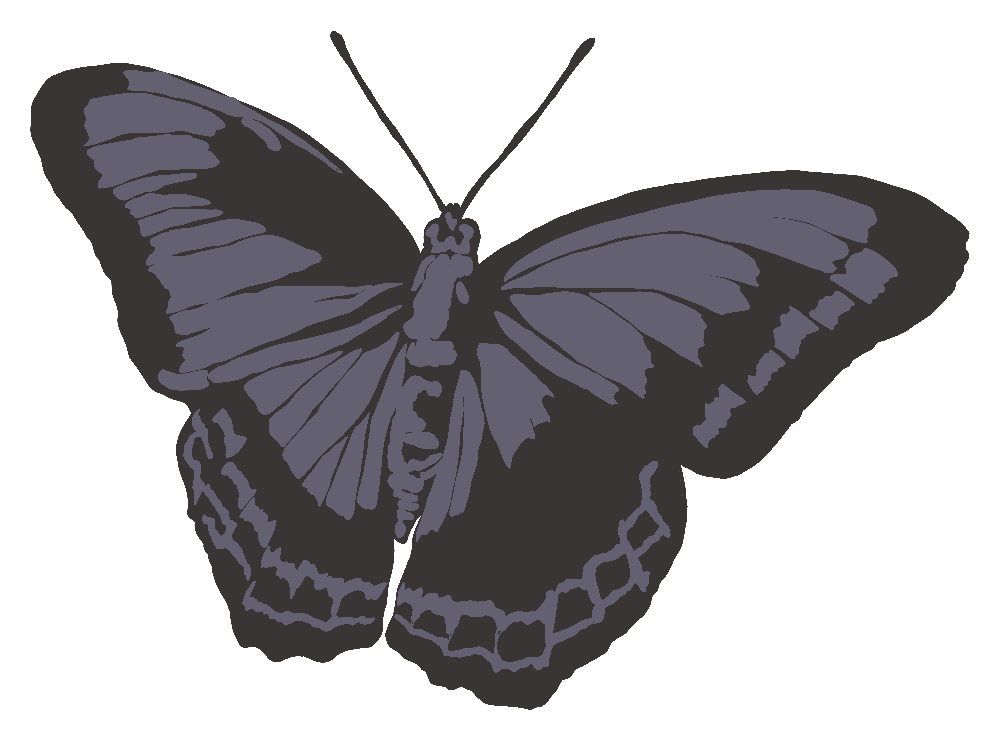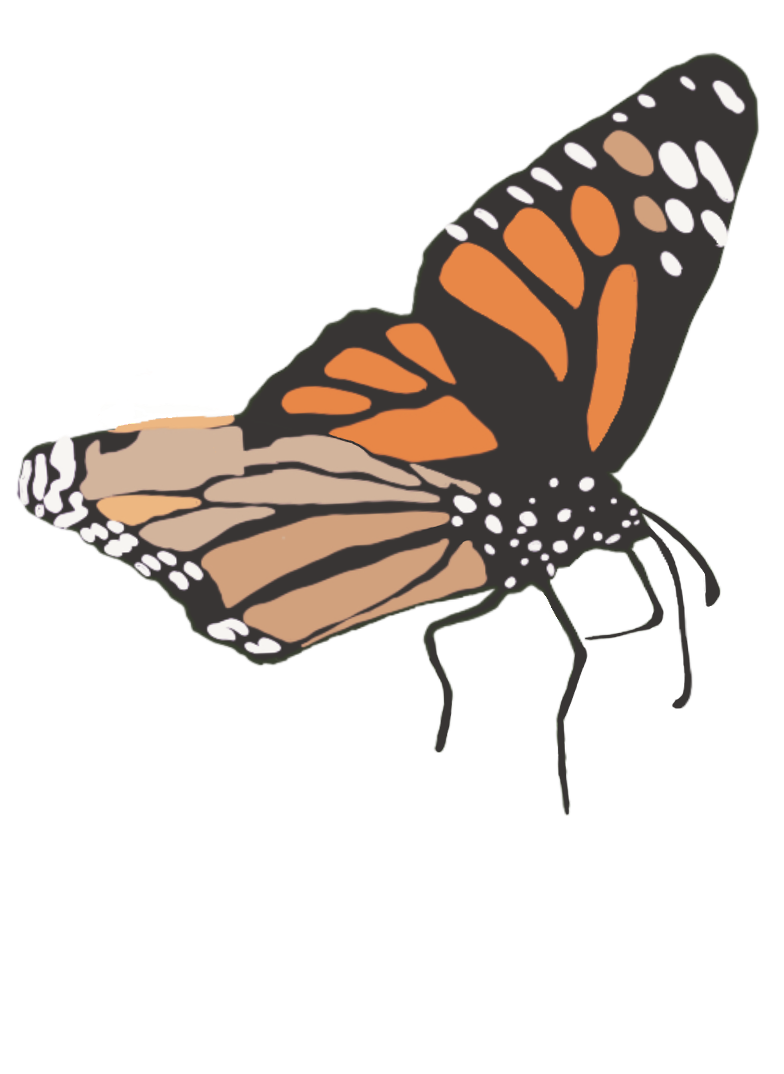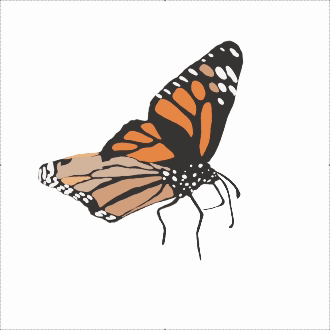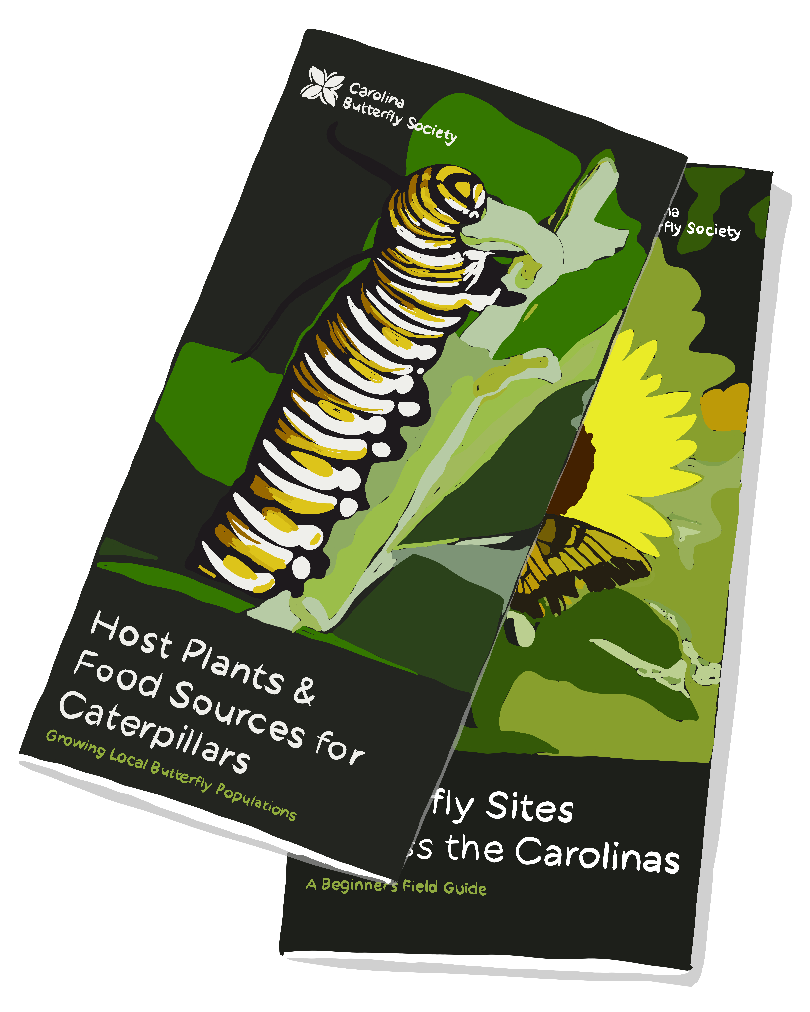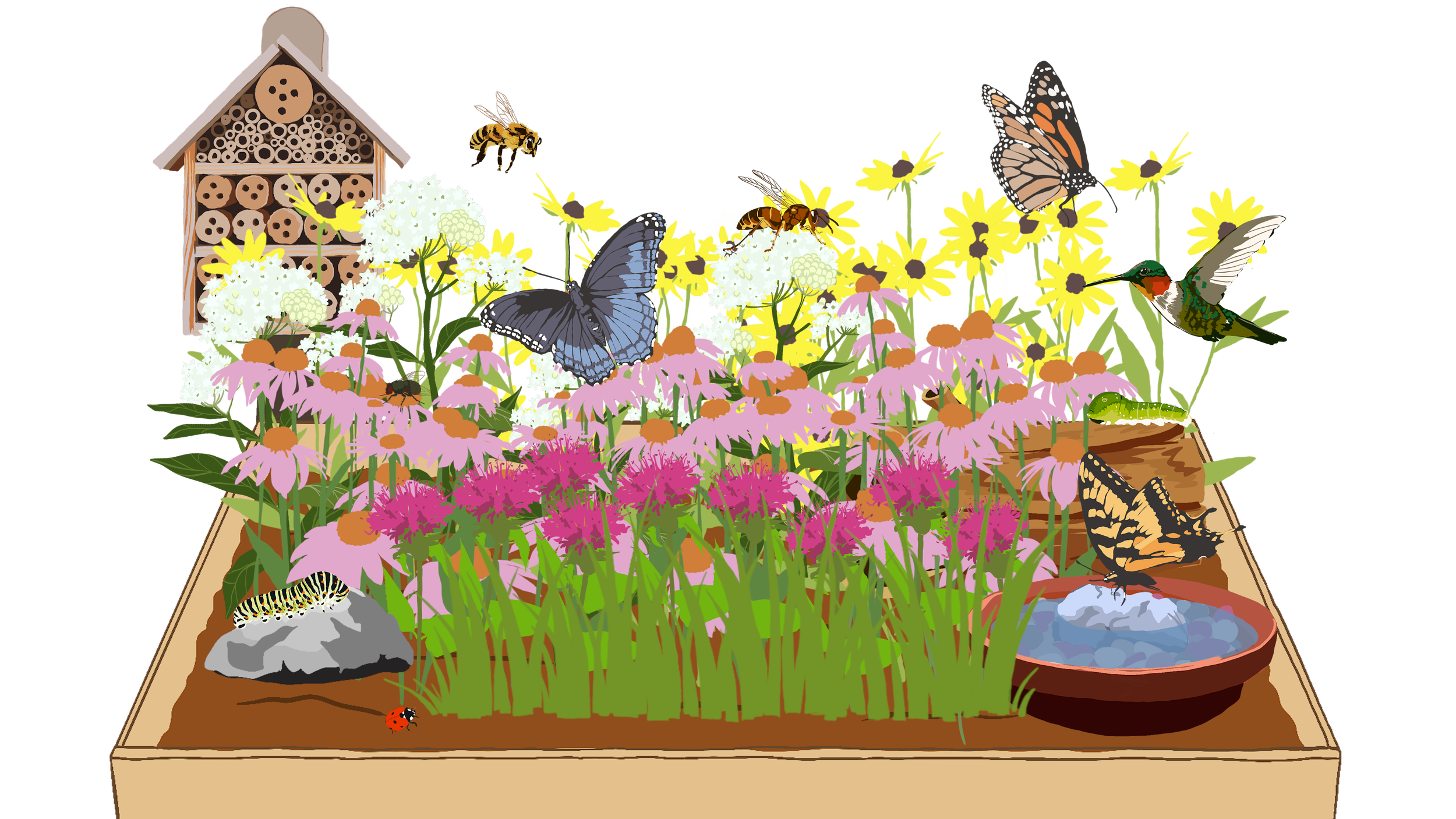How to Build a Pollinator Garden
Animating an Educational Infographic for Audiences of all ages to learn about the benefits of starting their own Pollinator garden.
Role
Illustrator, Animator, Writer
Deliverables
Animation, Illustration
Year
2025
Butterflies across the Americas are in need of pollinator pit-stops, or butterfly gardens in the wake of overwhelming habitat loss and dwindling butterfly population numbers. This animation was developed with the goal of educating members of the public about the importance of pollinator gardens and how to begin one in their own spaces.
The animation was conceived from the idea of creating an educational infographic, since most pollinator garden sources online focus less on visual aspects and more on informational text. While these informational sources are very important, there was a need for an educational graphic that highlights the same information provided in text-based source guides for visual learners; with a broad audience that can get both children and adults involved directly in pollinator conservation that they are able to do within their own means. This animated infographic would need to be both educational and visually pleasing to look at while still retaining realistic and scientific qualities, creating a unique challenge.
Backgrounds were created first for the animation and needed to be low in detail while still matching the overall look and feel of the educational aspects of the animation. The sky and grass in the background emulate a crafty, felt-inspired texture to add depth to the animation, while allowing the highly detailed animated illustrations to be the focal point.
Each of the illustrations were drawn in procreate in 3-4 colors layered on top of each other. This was done because many of the illustrations would later be animated, and needed to be simplified while still looking like recognizable butterfly species.
Animation Frame 1
Animation Frame 2
Animation Frame 3
Full Animated sequence
The animation style for the educational infographic needed to be approachable enough for younger audiences, especially with bright, beautiful colors, and educational for older audiences looking to learn more about making their spaces habitable for pollinators who are important for our ecosystem. Each animated butterfly was made up of hand-drawn frames that were later imposed together to create lively, flying butterflies.
While this animation was created from entirely North American sources about pollinator gardens, specifically from the state of North Carolina, the animation can be tailored for a variety of audiences from a diverse range of ecological backgrounds. North Carolina in particular, happens to have many resources available to the public provided by statewide wildlife organizations, and has many programs rooted in pollinator conservation, such as the North Carolina Wildlife Federation, and the North Carolina Museum of Natural Sciences.
The animation carries many state-specific resources and materials, such as the inclusion of only butterfly and animal species that can be found in North Carolina. Both local and migratory butterfly species are depicted, such as Eastern Swallow Tiger Swallows being local and Monarch butterflies being migratory, and depicting honeybees, paper wasps, ladybugs, and hummingbirds as species that can be found in North Carolina and may be found coexisting in Butterfly gardens. Showing desirable animals, such as butterflies and bees, next to typical “pests” like paper wasps and ladybugs show that these gardens are important for the diversity of the wildlife found in them as a naturally occurring ecosystem.
This can also be seen in the butterfly life cycle animation. While other animations might depict the monarch butterfly’s life cycle due to its recognizability, Monarch butterflies are mainly migratory to North Carolina. The black swallowtail’s life cycle was depicted in this animation to show North Carolina viewers a representation of a local butterfly species that they will certainly be able to find and document in their own butterfly garden.
Heavy research was also conducted to properly depict flower types specific to North Carolina’s naturally occurring native plants, such as Swamp Milkweed, Bee Balm, Black-Eyed Susans, and Coneflowers that pollinators local to NC benefit from. This was done for regional accuracy, and can easily be applied to viewers outside of North Carolina through the animation’s emphasis of conducting regional research. By not using specific flower names, but broad terminology for Annuals, Perennials, Host Plants, and Pollinator Feeders, the basics are provided so that users can research and discover their own region’s plant types and what they will provide for pollinators.
A 36 x 48 inch poster was also created from the assets of the animation that includes more information about the different native plant types and pollinator-friendly amenities not covered in the animation, with all of the flowers, pollinators, and other wildlife that can be found in pollinator gardens.




